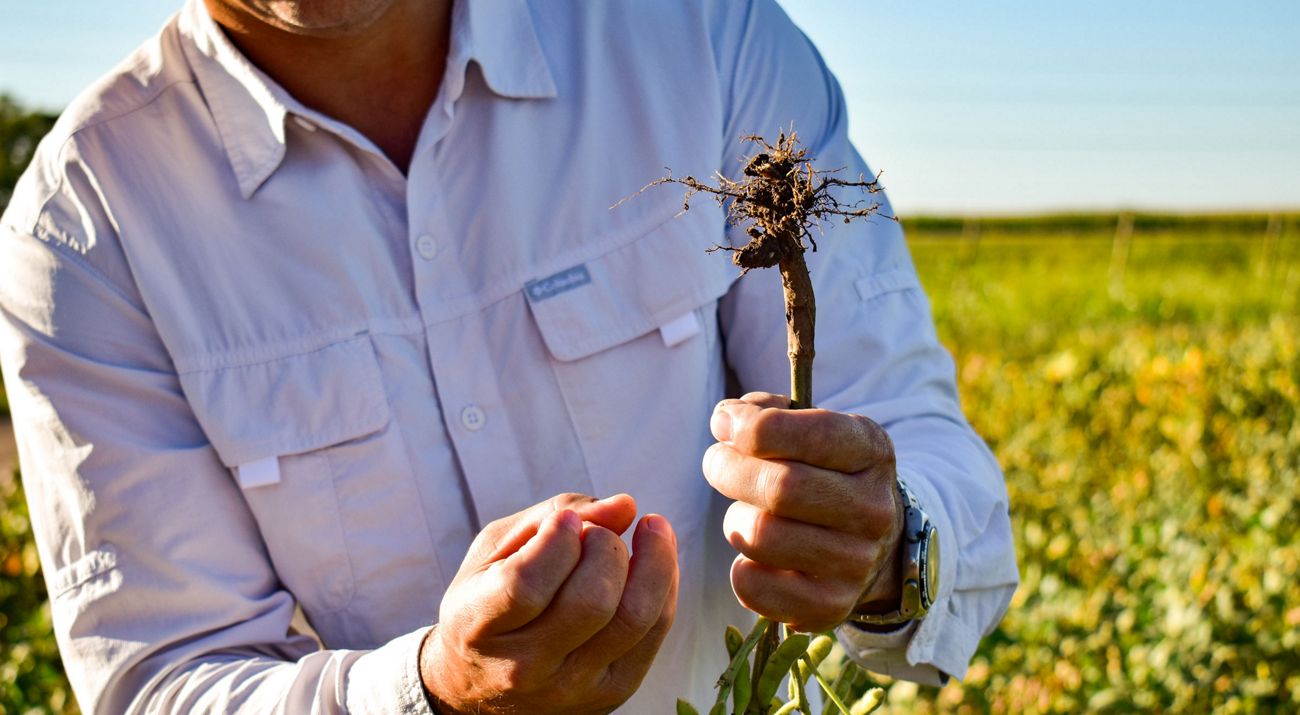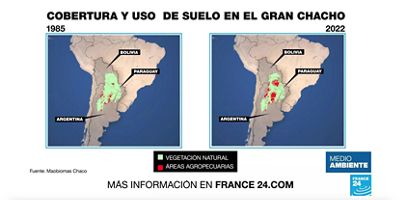Reforestation and regenerative agriculture in action in the Gran Chaco
Por: France 24

In this forest, the second largest in South America after the Amazon, corn and soy growers and livestock farmers learned to improve their production without deforesting and using methods such as cattle enclosures. France 24 partnered with The Nature Conservancy (TNC) to tell those stories.
The predictions science has made about climate are a reality in the Gran Chaco. Three universities in Argentina, Bolivia, and Paraguay used data from the Intergovernmental Panel on Climate Change (IPCC) and determined that the region’s yearly average temperature has increased by more than 1°C.
Argentina, Bolivia, and Paraguay are the three countries that share the Gran Chaco, the second-largest forest in South America, extending over 6.1 percent of the region's territory, according to the MapBiomas Project. The Gran Chaco spans one million square kilometers, nearly double the area of Spain.
Its ecosystems are home to 3,400 and 500 species of plants and birds, respectively, unique to the territory, according to TNC. Despite that, it is one of the places most deforested on the planet.
Using satellite information, MapBiomas determined that the Gran Chaco lost 14.5 percent of its natural vegetation between 1985 and 2022. Argentina was the country that lost the most natural wood vegetation, primarily due to the increase in agricultural activity. According to data from Version 4.0 of the satellite project, the forest area used for agriculture (soy) and extensive livestock farming has increased 225 percent in 38 years.

The consequences are felt in climate-change extreme events. In addition to experiencing more heat than before, the region’s inhabitants see the effects on their agricultural production. Ángela Agüero, a resident of the Aguas Turbias area in the Argentine Chaco, explains that the animals move away during the dry season to find water, and more die now than before.
In fact, the hydrological cycles have been the most affected in that forest. Farmers have noticed that now, rains last for shorter periods. Lucía Ruiz, a livestock farmer from Coronel Juan Solá (Morillo), explains that water from wells found at 12 meters deep is now found at 17 meters.
Farmers have learned to stock the water left over from a harvest for use in the following yield in the face of scarcity. Not only does Lucía do it, but she helps manage the process for others.
In 2009, she founded the Unión y Progreso organization to seek alliances among farmers and thus look for financing to change their livestock farming and agricultural methods, especially to cover price increases. She gives the example of a roll of cable for building a fence for animals; it can cost around $215, while the sale of a calf yields around $170. “We are rich and poor at the same time. If you live in the countryside, you do not lack food, but you don’t have money for agricultural operations, to go to the doctor, to pay for your children’s school. That’s why I founded the association so that we could improve our quality of life,” she noted.
The partnerships allowed them to seek the support of organizations to train members to present projects. Thanks to that, their proposals for financing rolls of cables were approved, they were trained in sustainable agriculture strategies so they would not deforest, and they learned to build wells and what tools to use. Lucía says they built a well that now supplies water to 17 people, a school, and a medical center in a semi-arid area.
Changes in agriculture and livestock farming
But one of the most urgent steps to curb deforestation is avoiding clearing forests to turn them into soil for agriculture or pasture for cattle. TNC’s bet for the Gran Chaco points to two paths: The first is to restore forests that need restoring via tree planting. The second is producing food without increasing deforestation, as Mauricio Núñez Riveiro, TNC’s Gran Chaco lead, explained to France 24. “That means increasing production per surface unit, profitability, and sustainable food production,” he noted.
In addition to encouraging farmers to produce deforestation-free food, the association also wants to provide knowledge about producing food sustainably. For example, Núñez mentions places in Salta where people grow species that compete with weeds, thus decreasing the use of pesticides.
Núñez explained that, so far, they have restored over 20,000 square kilometers in the Gran Chaco between the projects that avoid deforestation and the restoration efforts. Although that is a relatively low number compared to the total extension of the forest, it has already significantly changed how hundreds of producers work.